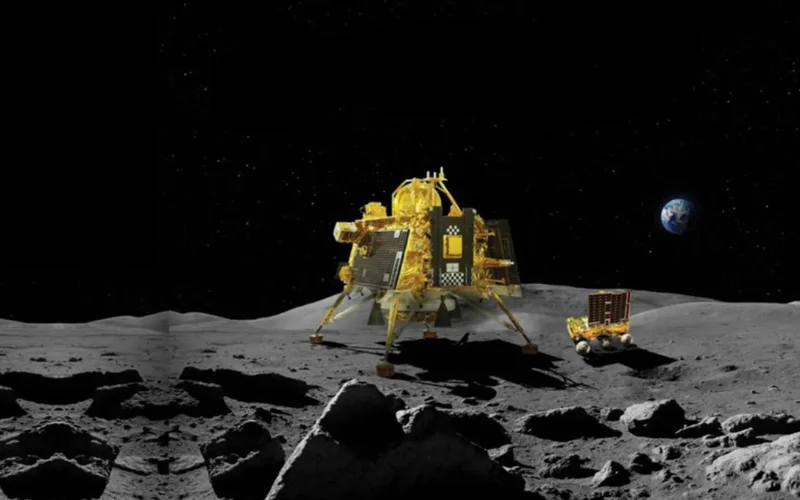Chandrayaan-3, the latest advancement in India’s impressive lunar exploration journey, has achieved a significant feat by successfully executing a soft landing on the moon’s surface. This accomplishment holds particular significance, given the setback of its predecessor’s failure in 2019.
The landing took place precisely at 5:34 am PT (6:04 pm IST) on a Wednesday, following more than a month since the spacecraft’s launch. This achievement positions India as the fourth nation globally to achieve a soft moon landing, joining the ranks of the United States, China, and the former Soviet Union. Remarkably, India takes the lead by accomplishing a successful landing on the moon’s south pole, a previously uncharted region that promises insights into the moon’s atmosphere and future prospects for space exploration.
Commendation from ISRO Chairman
Following this triumphant landing, ISRO Chairman S. Somanath lauded the collaborative efforts of scientists, engineers, staff, and industries that played vital roles in Chandrayaan-3’s success. This mission stands as a testament to their unwavering commitment and collective teamwork.
Progress Over Challenges
Chandrayaan-3, launched by the Indian Space Research Organization (ISRO) on July 14, employed the “Launch Vehicle Mark-III.” The mission’s primary goals encompass showcasing a safe landing and mobility on the lunar surface while conducting scientific experiments. With a budget under $75 million, Chandrayaan-3 comprises a lander, a rover, and a propulsion module housing seven scientific instruments.
To overcome past obstacles, the lander of Chandrayaan-3 has been outfitted with enhanced sensors, software, and propulsion systems. Rigorous simulations and testing have been conducted to ensure increased robustness for a successful landing.

Scientific Exploration and Insights
The lander’s experiments center on seismic vibrations, lunar temperature, plasma near the surface, thermal conductivity, elemental composition, and spectral signatures of Earth. This data will contribute significantly to understanding the lunar environment and hold immense value for upcoming missions, including those involving human exploration.
Global Significance and Future Prospects
Prime Minister Narendra Modi underscored the universal significance of India’s lunar mission, emphasizing a cooperative approach to exploration and advancement. This successful endeavor propels global space exploration efforts, inspiring progress and collaboration among nations.
Chandrayaan-3 marks a pivotal achievement in India’s space exploration voyage, building upon the foundation laid by the Chandrayaan-2 mission. While Chandrayaan-2’s lander-rover encountered challenges during its landing, the orbiter continues to gather vital data from lunar orbit.
Collaboration and Aspirations
India’s aspirations extend beyond Chandrayaan-3. The nation has become a signatory to NASA’s Artemis Accords, symbolizing joint efforts in space exploration. Notably, India’s partnership with NASA encompasses advanced training for Indian astronauts and participation in International Space Station missions. Future endeavors encompass Gaganyaan, a human space flight initiative, and the Aditya L1 project focused on sun research.
Additionally, ISRO and NASA are collaborating to launch a low-Earth observatory in 2024. This observatory will furnish comprehensive Earth data, facilitating analyses of ecosystems, ice mass, vegetation biomass, sea levels, and natural disasters.
India’s triumphant lunar landing underscores the nation’s escalating prominence in space exploration and its dedication to advancing scientific knowledge for humanity’s welfare.



